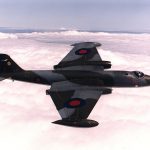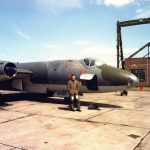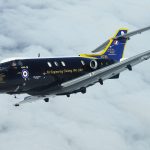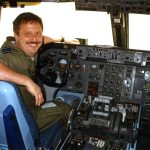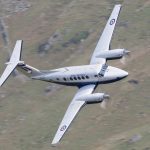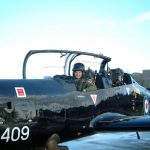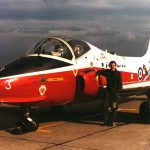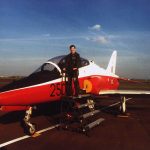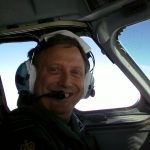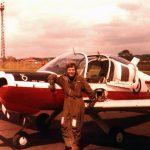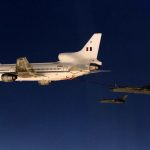RNP APCH Training Requirements
PBN Manual Vol 2, Chap 6,
Volume 2 – Implementing RNAV and RNP
Part C – Implementing RNP
Chapter 6 – Implementing RNP AR APCH
Section 3 – Navigation Specification
Subsection 5 – Pilot Knowledge and Training
3 Ground Training Segments
6.3.5.3.1 Ground training segments must address the following subjects, as training modules, in an approved RNP AR APCH training programme during the initial introduction of a crew member to RNP AR APCH systems and operations. For recurrent programmes, the curriculum need only review initial curriculum requirements and address new, revised, or emphasized items.
6.3.5.3.2 General concepts of RNP AR APCH operation. RNP AR APCH training must cover RNP AR APCH systems theory to the extent appropriate to ensure proper operational use. The pilot must understand basic concepts of RNP AR APCH systems operation, classifications, and limitations. The training must include general knowledge and operational application of RNP AR procedures. This training module must address the following specific elements:
- definition of RNP AR APCH;
- the differences between RNAV and RNP;
- the types of RNP AR APCH procedures and familiarity with the charting of these procedures;
- the programming and displaying of RNP and aircraft specific displays (e.g. actual navigation performance (ANP display));
- how to enable and disable the navigation updating modes related to RNP;
- the navigation accuracy appropriate for different phases of flight and RNP AR APCH procedures and how to select the navigation accuracy, if required;
- the use of GPS RAIM (or equivalent) forecasts and the effects of RAIM availability on RNP AR APCH procedures (pilot and dispatchers);
- when and how to terminate RNP navigation and transfer to traditional navigation due to loss of RNP and/or required equipment;
- how to determine database currency and whether it contains the navigational data required for use of GNSS waypoints;
- explanation of the different components that contribute to the total system error and their characteristics (e.g. effect of temperature on baro-VNAV and drift characteristics when using IRU with no radio updating)
- temperature compensation — pilots operating avionics systems with compensation for altimetry errors introduced by deviations from ISA may disregard the temperature limits on RNP AR APCH procedures, if pilot training on the use of the temperature compensation function is provided by the operator and the compensation function is utilized by the crew. However, the training must also recognize the temperature compensation by the system is applicable to the VNAV guidance and is not a substitute for the pilot compensating for the cold temperature effects on minimum altitudes or the decision altitude.
6.3.5.3.3 ATC communication and coordination for use of RNP AR APCH. Ground training must instruct the pilots on proper flight plan classifications and any air traffic control (ATC) procedures applicable to RNP AR APCH operations. The pilots must receive instructions on the need to advise ATC immediately when the performance of the aircraft’s navigation system is no longer suitable to support continuation of an RNP AR APCH procedure. Pilots must also know what navigation sensors form the basis for their RNP AR APCH compliance, and they must be able to assess the impact of a failure of any avionics or a known loss of ground systems on the remainder of the flight plan.
6.3.5.3.4 RNP AR APCH equipment components, controls, displays, and alerts. Academic training must include a discussion of RNP terminology, symbology, operation, optional controls, and display features including any items unique to an operator’s implementation or systems. The training must address applicable failure alerts and equipment limitations. The pilots and dispatchers should achieve a thorough understanding of the equipment used in RNP operations and any limitations on the use of the equipment during those operations.
6.3.5.3.5 AFM information and operating procedures. The AFM or other aircraft eligibility evidence must address normal and abnormal flight crew operating procedures, responses to failure alerts, and any equipment limitations, including related information on RNP modes of operation. Training must also address contingency procedures for loss or degradation of RNP capability. The flight operations manuals approved for use by the pilots (e.g. flight operations manual (FOM) or pilot operating handbook (POH)) should contain this information.
6.3.5.3.6 MEL operating provisions. Pilots must have a thorough understanding of the MEL requirements supporting RNP AR APCH operations.
4 Flight Training Segments
6.3.5.4.1 Training programmes must cover the proper execution of RNP AR APCH procedures in concert with the OEM’s documentation. The operational training must include: RNP AR APCH procedures and limitations; standardization of the set-up of the cockpit’s electronic displays during an RNP AR APCH procedure; recognition of the aural advisories, alerts and other annunciations that can impact compliance with an RNP AR APCH procedure; and the timely and correct responses to loss of RNP AR APCH capability in a variety of scenarios, embracing the scope of the RNP AR APCH procedures which the operator plans to complete. Such training may also use approved flight training devices or simulators. This training must address the following specific elements:
- Procedures for verifying that each pilot’s altimeter has the current setting before beginning the final approach of an RNP AR APCH procedure, including any operational limitations associated with the source(s) for the altimeter setting and the latency of checking and setting the altimeters approaching the FAF.
- The use of aircraft radar, TAWS, GPWS, or other avionics systems to support the pilot’s track monitoring and weather and obstacle avoidance.
- The effect of wind on aircraft performance during RNP AR APCH procedures and the need to remain within RNP containment area, including any operational wind limitation and aircraft configuration essential to safely complete an RNP AR procedure.
- The effect of ground speed on compliance with RNP AR APCH procedures and bank angle restrictions impacting the ability to remain on the course centreline. For RNP AR APCH procedures, aircraft are expected to maintain the standard speeds associated with the applicable category.
- The relationship between RNP and the appropriate approach minima line on an approved published RNP AR APCH procedure and any operational limitations noted on the chart e.g. temperature limits, RF leg requirements or loss of GNSS updating on approach, etc.
- Concise and complete pilot briefings for all RNP AR APCH procedures and the important role cockpit resource management (CRM) plays in successfully completing an RNP AR APCH procedure.
- Alerts from the loading and use of improper navigation accuracy data for a desired segment of an RNP AR procedure.
- The performance requirement to couple the autopilot/flight director to the navigation system’s lateral and vertical guidance on RNP AR APCH procedures requiring an RNP of less than RNP 0.3.
- The importance of aircraft configuration to ensure the aircraft maintains any required speeds during RNP AR procedures.
- The events triggering a missed approach when using the aircraft’s RNP capability.
- Any bank angle restrictions or limitations on RNP AR APCH procedures.
- The potentially detrimental effect on the ability to comply with an RNP AR APCH procedure when reducing the flap setting, reducing the bank angle or increasing airspeed.
- Pilot knowledge and skills necessary to properly conduct RNP AR APCH operations.
- Programming and operating the FMC, autopilot, auto throttles, radar, GPS, INS, EFIS (including the moving map), and TAWS in support of RNP AR APCH procedures.
- The effect of activating TOGA while in a turn.
- FTE monitoring and impact on go-around decision and operation.
- Loss of GNSS during a procedure.
- Performance issues associated with reversion to radio updating and limitations on the use of DME and VOR updating.
- Flight crew contingency procedures for a loss of RNP capability during a missed approach. Due to the lack of navigation guidance, the training should emphasize the flight crew contingency actions that achieve separation from terrain and obstacles. The operator should tailor these contingency procedures to their specific RNP AR APCH procedures.
5 Evaluation
6.3.5.5.1 Initial evaluation of RNP AR APCH operations knowledge and procedures. The operator must evaluate each individual pilot’s knowledge of RNP AR APCH procedures prior to employing RNP AR APCH procedures as appropriate. As a minimum, the review must include a thorough evaluation of pilot procedures and specific aircraft performance requirements for RNP AR APCH operations. An acceptable means for this initial assessment includes one of the following:
- an evaluation by an authorized instructor/evaluator or check-airman using an approved simulator or training device;
- an evaluation by an authorized instructor/evaluator or check-airman during line operations, training flights, proficiency checks, practical tests events, operating experience, route checks, and/or line checks; or
- line-oriented flight training (LOFT)/line-oriented evaluation (LOE) programmes using an approved simulator that incorporates RNP operations that employ the unique RNP AR APCH characteristics (i.e. RF legs, RNP missed approach) of the operator’s approved procedures.
6.3.5.5.2 Evaluation content. Specific elements that must be addressed in this evaluation module are:
- demonstrate the use of any RNP limits that may impact various RNP AR APCH procedures;
- demonstrate the application of radio-updating procedures, such as enabling and disabling ground-based radio updating of the FMC (i.e. DME/DME and VOR/DME updating) and knowledge of when to use this feature. If the aircraft’s avionics do not include the capability to disable radio updating, then the training must ensure the pilot is able to accomplish the operational actions that mitigate the lack of this feature;
- demonstrate the ability to monitor the actual lateral and vertical flight paths relative to the programmed flight path and complete the appropriate flight crew procedures when exceeding a lateral or vertical FTE limit;
- demonstrate the ability to read and adapt to a RAIM (or equivalent) forecast, including forecasts predicting a lack of RAIM availability;
- demonstrate the proper set-up of the FMC, the weather radar, TAWS, and moving map for the various RNP AR APCH operations and scenarios the operator plans to implement;
- demonstrate the use of pilot briefings and checklists for RNP AR APCH operations as appropriate with emphasis on CRM;
- demonstrate knowledge of and ability to perform an RNP AR APCH missed approach procedure in a variety of operational scenarios (e.g. loss of navigation or failure to acquire visual conditions)
- demonstrate speed control during segments requiring speed restrictions to ensure compliance with an RNP AR APCH procedures;
- demonstrate competent use of RNP AR APCH procedure plates, briefing cards, and checklists;
- demonstrate the ability to complete a stable RNP AR APCH operation including bank angle, speed control, and remain on the procedure’s centreline; and
- knowledge of the operational limit for deviation below the desired flight path on an RNP AR APCH procedure and how to accurately monitor the aircraft’s position relative to the vertical flight path.
6 Recurrent Training
6.3.5.6.1 The operator should incorporate recurrent RNP training that employs the unique AR characteristics of the operator’s approved procedures as part of the overall programme.
6.3.5.6.2 A minimum of two RNP AR APCHs, as applicable, must be flown by each pilot for each duty position (pilot flying and pilot monitoring), with one culminating in a landing and one culminating in a missed approach, and may be substituted for any required “precision-like” approach.

